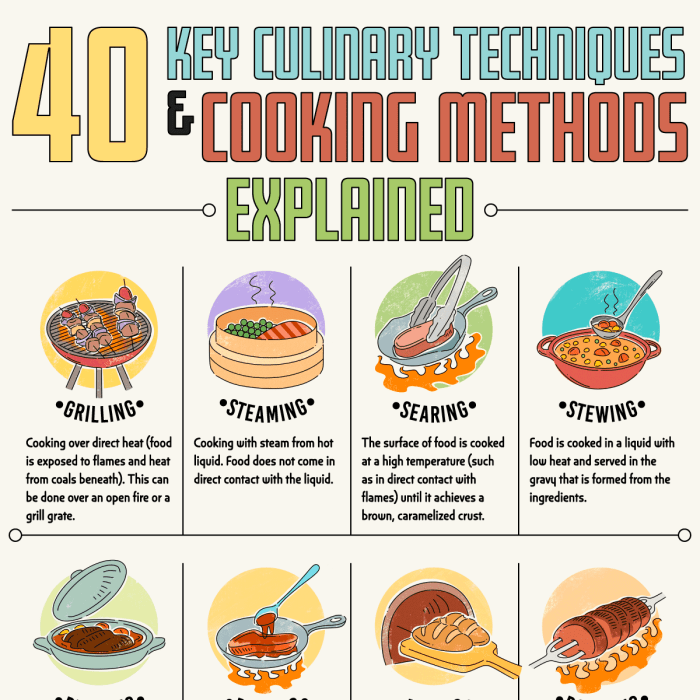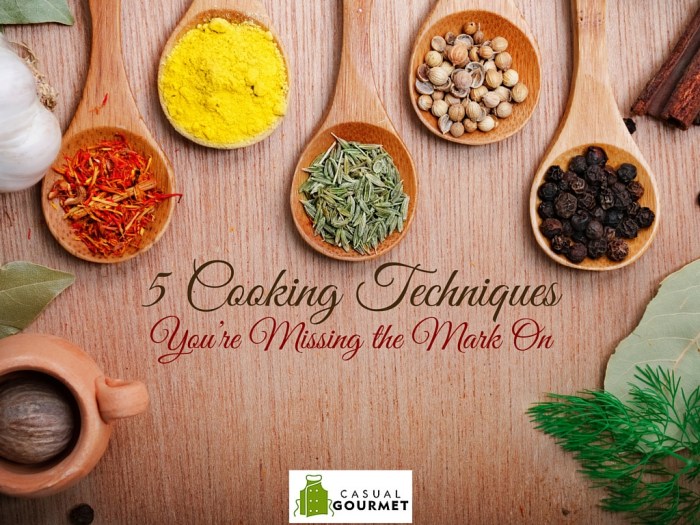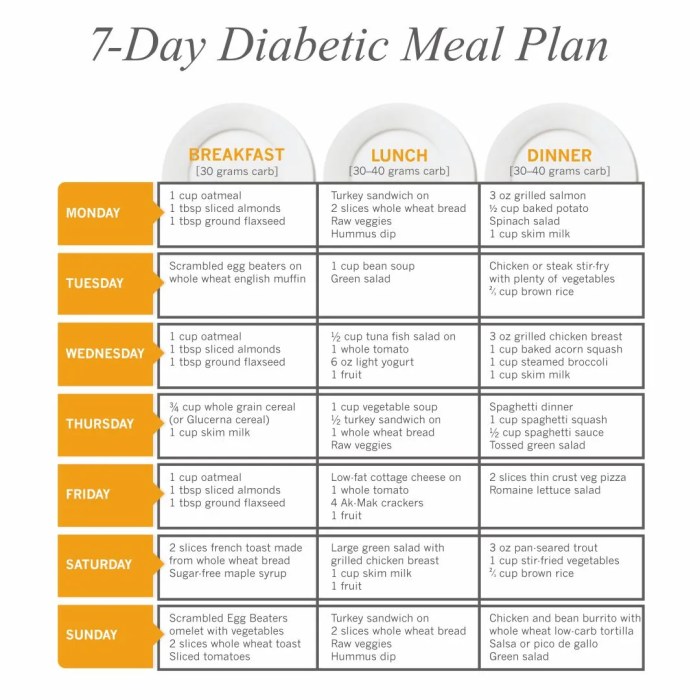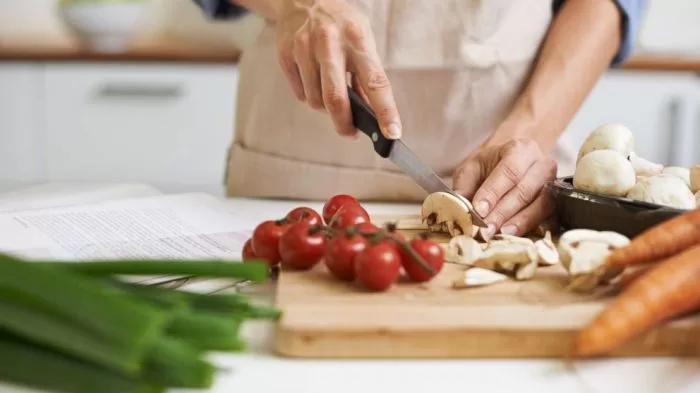Mastering cooking techniques at home empowers individuals to elevate their culinary skills, creating restaurant-quality dishes within the comfort of their own kitchens. This comprehensive guide provides a step-by-step approach to mastering essential techniques, understanding heat control, exploring various cooking methods, adapting recipes, and showcasing a curated selection of recipes for all skill levels.
Through clear explanations, practical tips, and expert guidance, this guide transforms the home kitchen into a culinary haven, enabling readers to unlock their inner chef and delight their taste buds with exceptional homemade creations.
Mastering Knife Skills

Knife skills are essential for precision, safety, and efficiency in the kitchen. Sharp knives allow for clean, controlled cuts that minimize the risk of accidents and improve the quality of your dishes.
Knife Grips and Techniques
There are several fundamental knife grips and techniques that every home cook should master.
- Pinch Grip: Used for small, precise cuts, such as mincing herbs or garlic.
- Handle Grip: Provides more control and stability for larger cuts, such as slicing vegetables or carving meat.
- Claw Grip: Keeps your fingers curled under the knife handle, providing protection for your knuckles when using a rocking motion for chopping.
- Julienne Cut: A thin, matchstick-like cut used for vegetables like carrots and celery.
- Brunoise Cut: A fine dice cut used for vegetables and herbs, typically 1/16-inch cubes.
Maintaining and Storing Knives
Proper maintenance and storage are crucial for keeping knives sharp and safe.
- Sharpen Regularly: Use a honing steel or whetstone to maintain the knife’s edge. Sharpening too frequently can damage the blade, while not sharpening enough can lead to dull knives.
- Hand-Wash: Avoid putting knives in the dishwasher, as the harsh detergents and high heat can damage the blade.
- Store Properly: Keep knives in a safe and accessible location, such as a knife block or magnetic strip.
Essential Cooking Methods: Mastering Cooking Techniques At Home
Mastering essential cooking methods is crucial for culinary success at home. Understanding the principles behind various techniques empowers home cooks to create a diverse range of dishes with confidence and precision. This guide will explore the fundamental cooking methods of sautéing, grilling, roasting, baking, and steaming, providing insights into their principles, suitable dishes, and tips for achieving optimal results.
Sautéing
Sautéing involves cooking food in a pan over medium-high heat with a small amount of fat. This technique allows for rapid browning and caramelization of the food’s surface, while preserving its tenderness and moisture. Suitable dishes for sautéing include stir-fries, omelets, and pan-seared meats.
Mastering cooking techniques at home allows for experimentation and the exploration of diverse flavors. Explore new flavors in your kitchen to enhance your culinary skills and elevate your home-cooked meals. By understanding the principles of cooking, you can confidently experiment with different ingredients, spices, and herbs to create dishes that tantalize your taste buds and impress your family and friends.
Mastering cooking techniques empowers you to explore a world of culinary possibilities and cultivate your passion for food.
To sauté effectively, preheat the pan over medium-high heat and add a small amount of fat, such as olive oil or butter. When the fat is shimmering, add the food and cook, stirring or tossing occasionally, until browned and tender. Avoid overcrowding the pan, as this can result in steaming rather than sautéing.
Mastering cooking techniques at home empowers home cooks to elevate their culinary creations. By exploring diverse flavors and techniques, individuals can embark on culinary adventures that transform ordinary meals into extraordinary experiences. Through experimentation and practice, home cooks can develop their skills and confidently navigate the intricacies of various cuisines, unlocking the potential for creating delectable dishes that tantalize taste buds and impress guests.
Grilling
Grilling involves cooking food over direct heat, typically on a grill or griddle. This method imparts a distinctive smoky flavor and char to the food’s exterior, while keeping the interior juicy. Suitable dishes for grilling include steaks, burgers, and vegetables.
To grill successfully, preheat the grill to medium-high heat and brush the food with oil to prevent sticking. Place the food on the grill and cook, turning occasionally, until cooked through and marked with grill lines. Avoid overcooking, as this can dry out the food.
Recipe Adaptation and Substitution

Understanding the ingredients in a recipe and their functions is crucial for successful cooking. Each ingredient plays a specific role in the dish, affecting its flavor, texture, and appearance.
Ingredient Functions
- Base Ingredients: Form the foundation of the dish, providing bulk and sustenance (e.g., flour, rice, pasta).
- Flavorings: Enhance the taste of the dish (e.g., herbs, spices, seasonings).
- Liquids: Hydrate and bind ingredients, contribute to texture (e.g., water, broth, milk).
- Fats: Provide richness, flavor, and texture (e.g., butter, oil, cream).
- Leavening Agents: Cause baked goods to rise (e.g., baking powder, yeast).
- Thickeners: Create a thicker consistency (e.g., cornstarch, flour).
Ingredient Substitution
Understanding ingredient functions allows for informed substitutions based on availability or dietary restrictions. When substituting, consider the following:
- Flavor: Ensure the substitute provides a similar flavor profile.
- Texture: Choose a substitute with a comparable texture to maintain the desired consistency.
- Function: Replace with an ingredient that serves the same purpose (e.g., flour for cornstarch as a thickener).
Recipe Adaptation, Mastering cooking techniques at home
Recipes can be adapted to suit personal preferences or dietary needs. Adaptations may include:
- Flavor Adjustments: Increase or decrease seasonings to taste.
- Ingredient Swaps: Substitute ingredients for dietary restrictions or preferences (e.g., gluten-free flour for regular flour).
- Portion Modifications: Adjust the quantity of ingredients to create larger or smaller portions.
- Cooking Method Variations: Experiment with different cooking methods to achieve desired textures or flavors.
Kitchen Recipes
A well-stocked kitchen with a diverse selection of recipes is essential for any home cook. This section provides a curated collection of recipes organized by skill level and cuisine, offering a wide range of options for culinary exploration and enjoyment.
Each recipe includes detailed step-by-step instructions, comprehensive ingredient lists, and estimated cooking times. To facilitate easy navigation and accessibility, the recipes are presented in a user-friendly table format.
Beginner-Friendly Recipes
- One-Pot Pasta: A quick and effortless dish that combines pasta, vegetables, and sauce in a single pot.
- Sheet Pan Chicken and Vegetables: A convenient and healthy meal where chicken and vegetables are roasted together on a sheet pan.
- Grilled Cheese Sandwich: A classic comfort food made with melted cheese between two slices of toasted bread.
Summary
Mastering cooking techniques at home is a transformative journey that empowers individuals to create culinary masterpieces with confidence and creativity. By embracing the principles Artikeld in this guide, home cooks can elevate their skills, experiment with flavors, and savor the joy of preparing and sharing delicious meals that nourish both body and soul.
Questions and Answers
What are the benefits of mastering cooking techniques at home?
Mastering cooking techniques at home offers numerous benefits, including improved health and nutrition, cost savings, enhanced creativity, stress reduction, and a sense of accomplishment.
How can I improve my knife skills?
To improve knife skills, focus on using sharp knives, maintaining proper grip and technique, and practicing regularly. Consider taking a knife skills class or watching online tutorials for guidance.
What is the importance of heat control in cooking?
Heat control is crucial for achieving optimal results in cooking. Different cooking methods and dishes require specific temperatures to ensure proper cooking, flavor development, and food safety.



